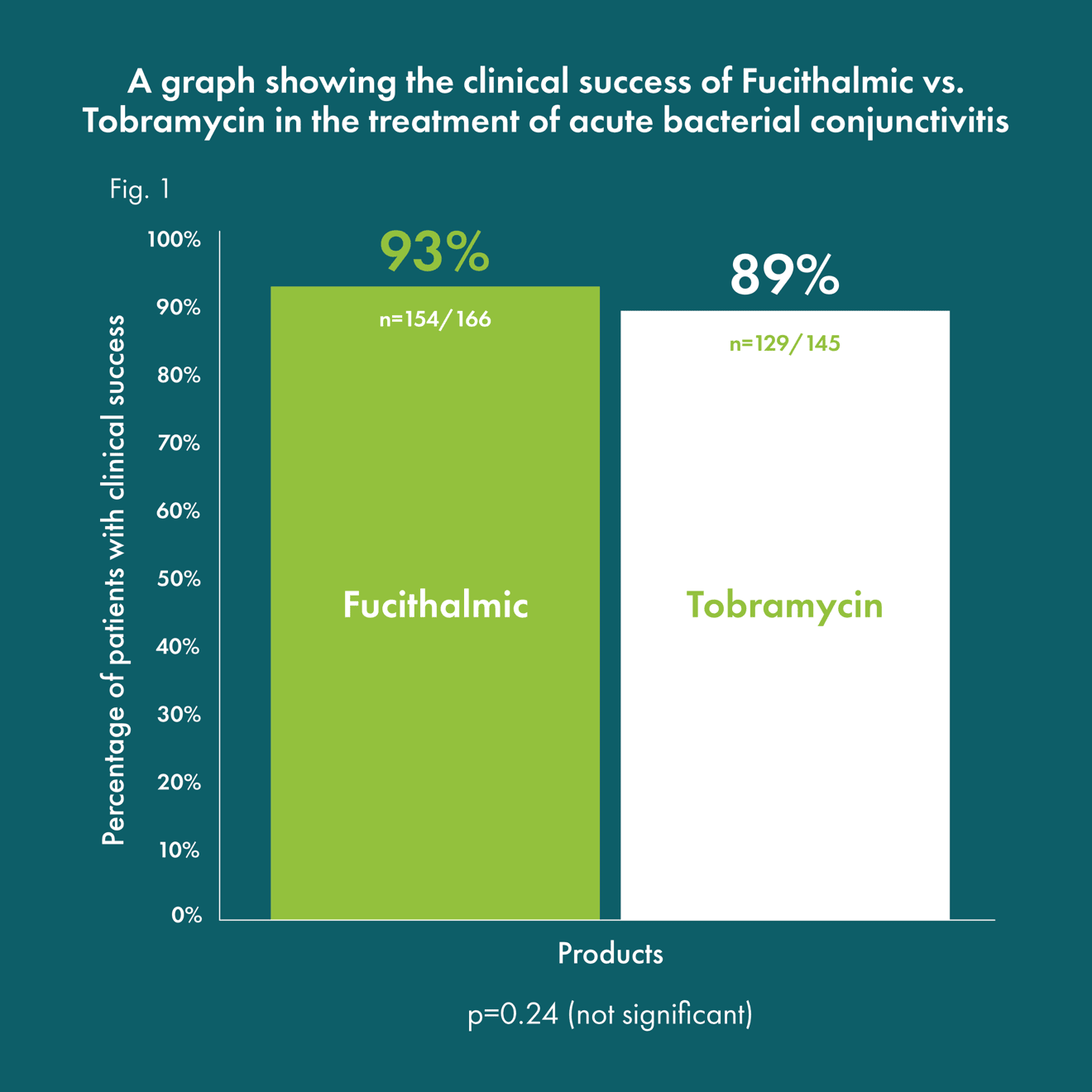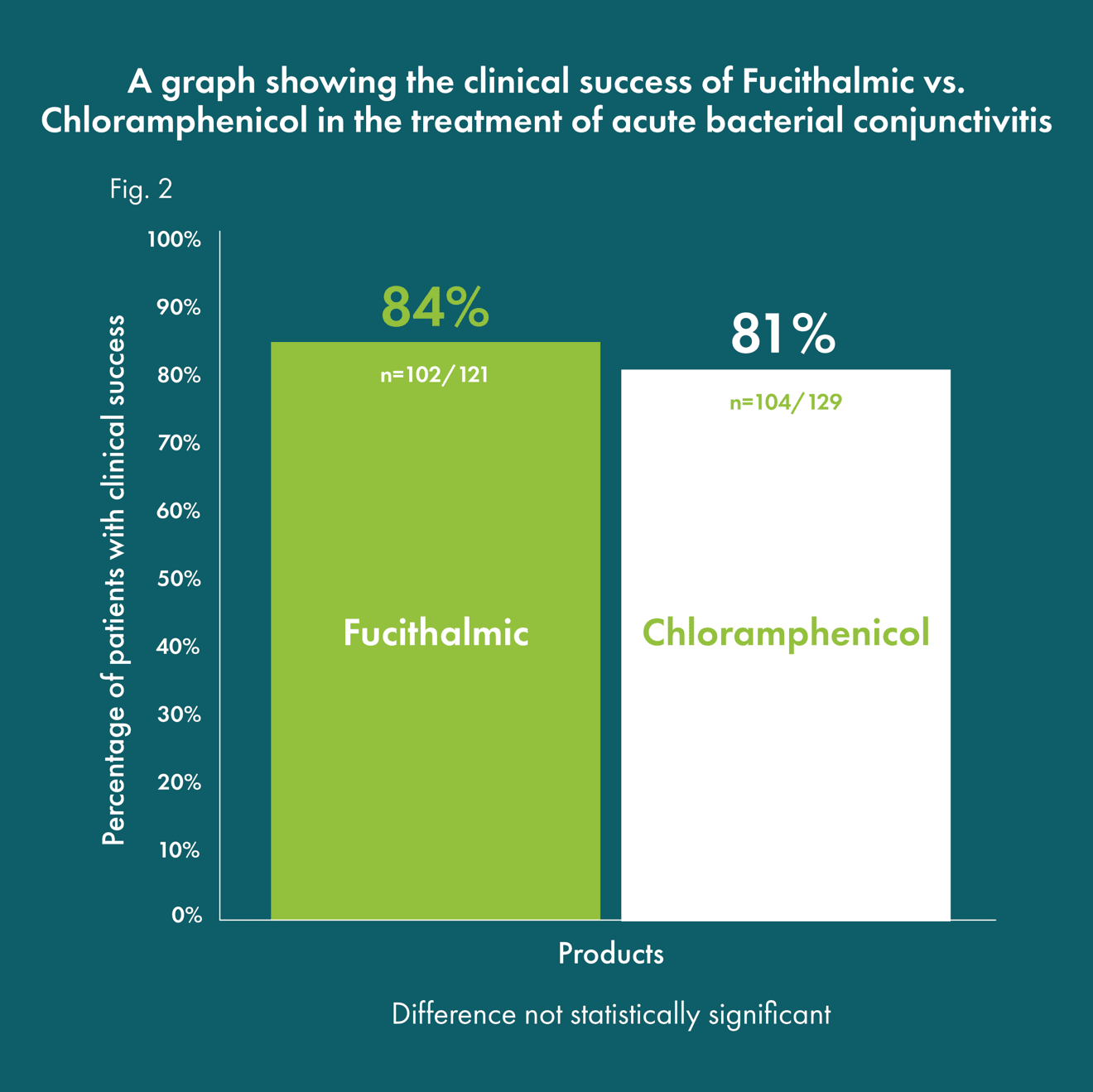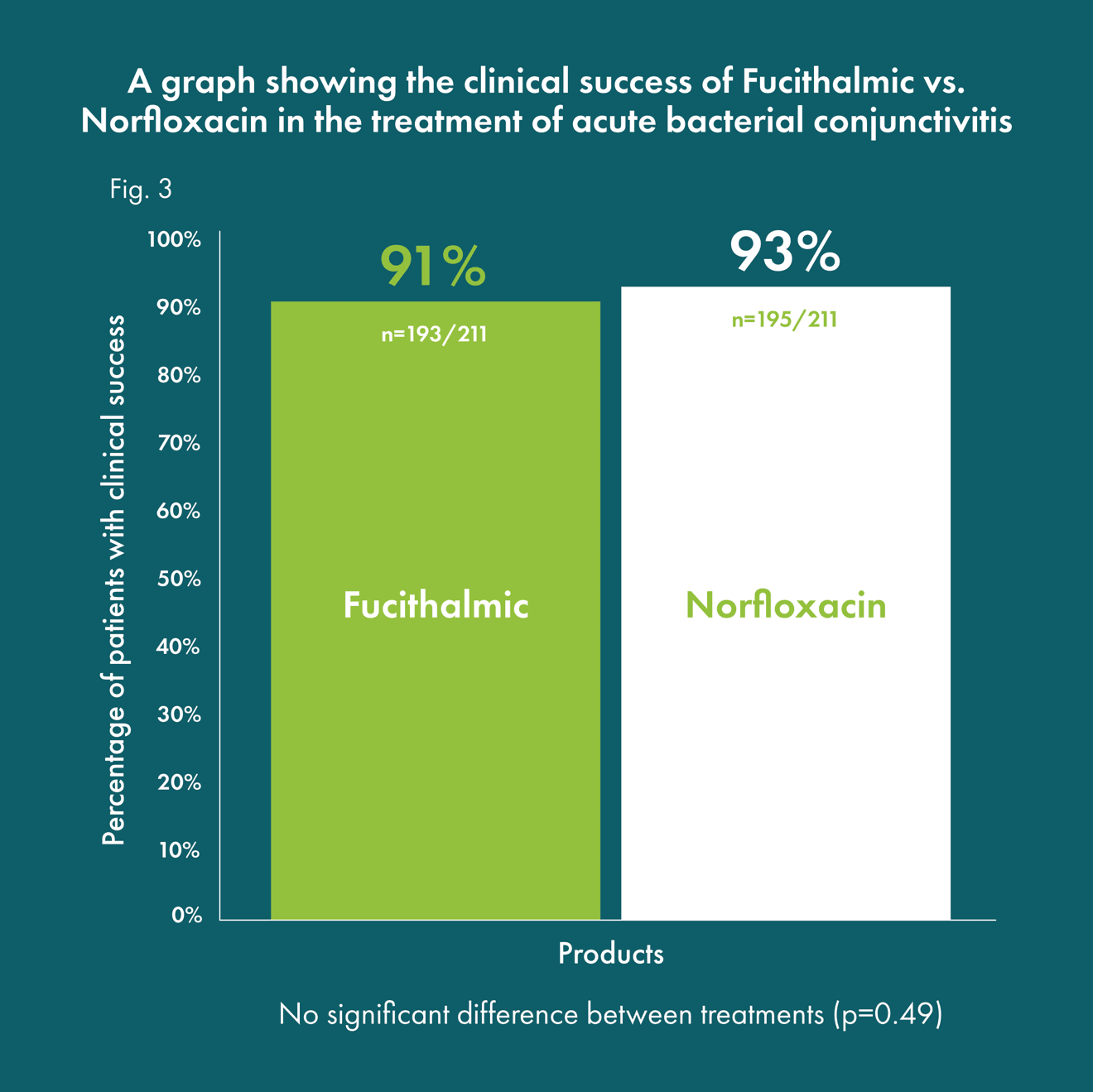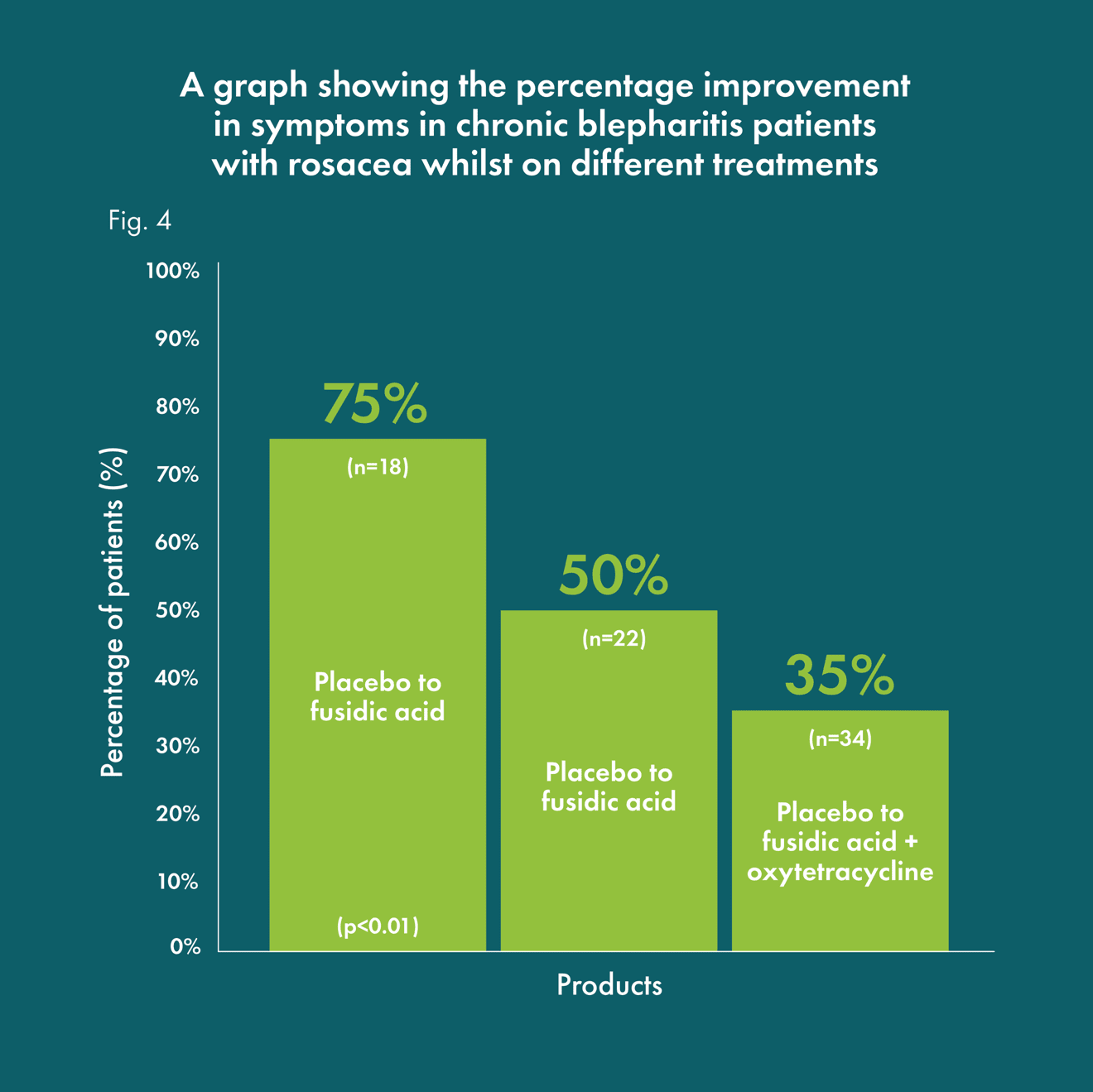Efficacy
A study by Jackson et al. has demonstrated the clinical efficacy of Fucithalmic versus tobramycin in the treatment of acute bacterial conjunctivitis.1

Figure 1. Adapted from a multicentre, investigator-blind, parallel group study of the clinical and microbiologic efficacy, safety and acceptability of 1% fusidic acid viscous drops (Fucithalmic) with 0.3% tobramycin ophthalmic solution in the treatment of suspected bacterial conjunctivitis1
A study by Hvidberg has demonstrated the clinical efficacy of Fucithalmic versus chloramphenicol in the treatment of acute bacterial conjunctivitis.2

Figure 2. Adapted from a study of a single-blind, randomised comparison of 1% fusidic acid and 0.5% chloramphenicol viscous eye drops in the treatment of patients with acute purulent conjunctivitis2
A study by Wall et al. has demonstrated Fucithalmic as being as effective as norfloxacin in the treatment of acute bacterial conjunctivitis.2

Figure 3. Adapted from a multicentre, investigator-blind, parallel group study of the comparison of the effectiveness, safety and acceptability of 1% fusidic acid viscous drops with 0.3% norfloxacin ophthalmic solution in the treatment of the symptoms of acute bacterial conjunctivitis2
A study by DV Seal et al has demonstrated clinical efficacy of Fucithalmicin patients having chronic blepharitis with rosacea.4

Figure 4. Adapted from a prospective, randomised, double blind, partial crossover, placebo controlled trial comparing the performance of topical fusidic acid gel 1% (Fucithalmic®) and oral oxytetracycline (250 mg) as treatment for symptomatic chronic blepharitis by DV Seal, et al.4
REFERENCES:
-
Jackson WB et al. Can J Ophthalmol 2002;37:228–37.
-
Hvidberg J. Acta Ophthalmologica 1987;65:43–7.
-
Wall AR et al. J Clin Res 1998;1:316–25.
-
Seal DV. Placebo controlled trial of fusidic acid gel and oxytetracycline for recurrent blepharitis and rosacea. Br J Ophthalmol. 1995 Jan;79(1):42-5.